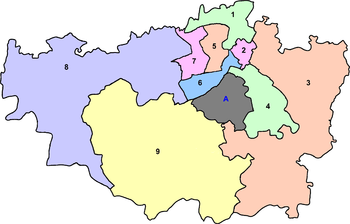Delhi Gate, Lahore
Delhi Gate (Urdu: دہلی دروازه, Delhi Darwaza) is one of six remaining historic gates of the Walled City of Lahore, Pakistan. Delhi Gate and the adjacent Shahi Hammam were restored in 2015 by the Aga Khan Cultural Service Pakistan.
| دہلی دروازه | |
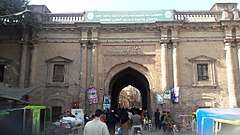 Lahore's Delhi Gate faces eastward in the direction of Delhi, India | |
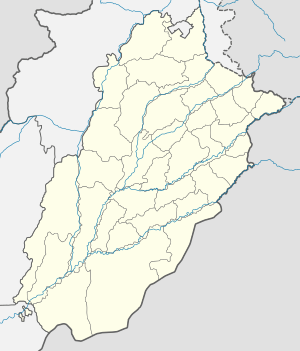 Location in Punjab, Pakistan 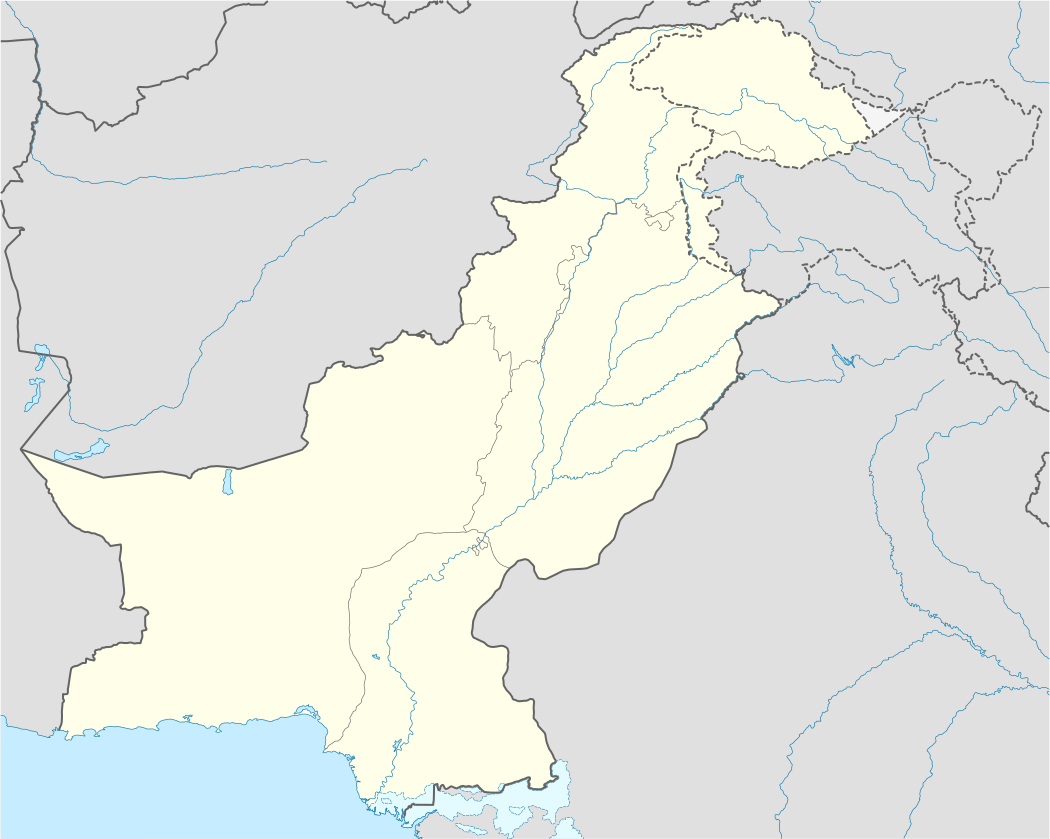 Delhi Gate, Lahore (Pakistan) | |
| Coordinates | |
|---|---|
| Location | Lahore, Punjab, Pakistan |
| Type | City gate |
Background
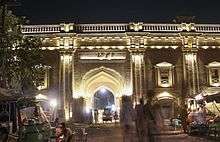
The Delhi Gate was originally built during the Mughal period, and is now known as the Chitta Gate, about 100 metres west of the new Delhi Gate. The gate was named after Delhi since the gate opened east, in the general direction of that city.[1] During the Mughal era, the gate served as the main gateway to Lahore, and its doors were shut every evening.[1] The surrounding area includes several buildings of historical significance including the 17th century Wazir Khan Mosque, Shahi Hammam, and havelis. Delhi Gate also served as Union Council 27 (UC 27) in Tehsil Ravi of Lahore City District.
History
The gate was once part of Lahore's city walls, which were torn down by the British after the Sepoy Mutiny of 1857.[2] The gate itself was also destroyed by the British, but was reconstructed in the 19th century under the British Raj. Following the Partition of British India, the gate housed a girls' school.[1] The gate is mentioned by Rudyard Kipling in his 1891 short story "The City of Dreadful Night."[3] Lahore's famous Zamzama Gun was originally placed at Delhi Gate, but was relocated by the British to a site in front of the Lahore Museum.[4]
Structure
The gate is a two-story structure which contains space for ten to twelve shops. The gate's rooftop can be accessed by a staircase.[1]
Restoration
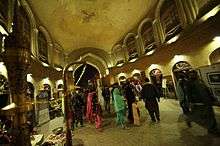
The Aga Khan Cultural Service Pakistan (AKCSP) undertook a project to renovate the gate that was funded by the government of Norway. Goals of the project were to conserve not only the gate, but also the nearby 17th century Wazir Khan Mosque, as well as adjacent the Shahi Hammam.
Gallery
.jpg) The gate is now illuminated by accent lighting following restoration.
The gate is now illuminated by accent lighting following restoration. The gate's interior features several cells which are used as shops.
The gate's interior features several cells which are used as shops..jpg)

.jpg) Within the gate's vicinity are several shops and stalls.
Within the gate's vicinity are several shops and stalls..jpg) Delhi Gate's night market.
Delhi Gate's night market. Entrance to the gateway is illuminated at night.
Entrance to the gateway is illuminated at night.
See also
References
- Qureishi, Tania (11 October 2015). "Delhi Gate – A must see heritage". Pakistan Today. Retrieved 19 December 2016.
- Majid, Sheikh (14 August 2016). "Harking Back: It's time to reconstruct Lahore's lost walls". Dawn. Retrieved 19 December 2016.
- Glover, William (2008). Making Lahore Modern: Constructing and Imagining a Colonial City. U of Minnesota Press. p. 50. ISBN 9781452913384.
- Qureshi, Naeem (1997). "A Museum for British Lahore". History Today. 47 (9).
External links
| Wikimedia Commons has media related to Delhi Gate, Lahore. |
